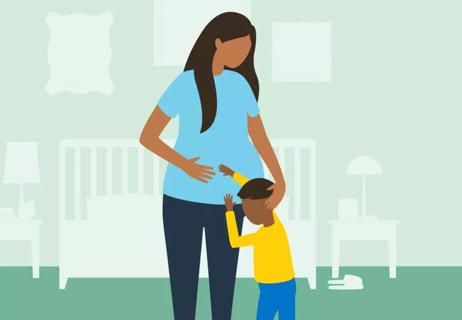It could help you feel more empowered and prepared

Thanks to growing awareness of autism spectrum disorder (ASD), diagnoses have been on the rise among children in recent years. At the turn of the millennium, the U.S. Centers for Disease Control and Prevention (CDC) reported that 1 in 150 8-year-old children had an autism diagnosis. By 2018, the number was 1 in 44.
Advertisement
Cleveland Clinic is a non-profit academic medical center. Advertising on our site helps support our mission. We do not endorse non-Cleveland Clinic products or services. Policy
But what about adults? It wasn’t until 2020 that the CDC released its first adult-focused data, reporting that an estimated 2.21% of adults in the U.S. have ASD. That report recognizes that children diagnosed with ASD in the early 2000s are now transitioning to adulthood. It also acknowledges that there isn’t currently a good way to collect data on how many adults actually have autism.
Adult psychiatrist Rachael Ferrari, MD, talks about what you can do if you think you’re one of them, including how to recognize symptoms of autism in adults and how to pursue a diagnosis.
Many adults can and do have autism spectrum disorder. But it’s only recently that doctors have begun diagnosing them with it.
That’s in part because autism is still a fairly recent addition to The Diagnostic and Statistical Manual of Mental Disorders (DSM), the gold standard for classifying mental disorders in the U.S. When autism was first added to the DSM in 1980, it was only classified as a disorder that affected children.
The communication issues that accompany ASD are often evident and severe in childhood. Starting in the teenage years, though, and into adulthood, ASD can be more difficult to identify.
Advertisement
“ASD’s social deficits can go unnoticed for a long time,” Dr. Ferrari says. So, what does that mean for adults with ASD who were never diagnosed as kids?
If you’re an adult who was never diagnosed as a child, you may not realize that some of the issues and feelings you’ve dealt with your whole life are actually related to undiagnosed ASD.
“When it comes to adults, we have to think about what the DSM criteria are and then how each of them can manifest in adults,” Dr. Ferrari says.
Dr. Ferrari explains how each of these criteria may show up in adults, especially those who don’t realize they have autism spectrum disorder.
Difficulties with both verbal and nonverbal communication can put adults with autism at a conversational disadvantage.
As much as 90% of human communication happens nonverbally, like in facial expressions, eye contact and gesturing. But many people with autism have trouble understanding, interpreting or even noticing these nonverbal communications.
You may also have trouble with verbal communication like tone of voice (not recognizing when someone else is upset, for example) and conversational styles (like taking metaphors too literally).
“Because of these differences in communicating, developing healthy friendships and relationships often becomes a concern for people with autism, from school to jobs to their personal lives,” Dr. Ferrari notes. “You want to have great relationships just like everyone else, but the world isn’t always set up to give you those opportunities as easily.”
Communication troubles can lead to social stigma that labels individuals with autism as rude or weird — things you never intended to be but can’t figure out how to avoid. And if you feel like you just can’t get past those communication barriers, you might socially isolate and pull away from potential relationships as a result.
“If you have communication deficits that weren’t caught when you were a child, you’ve spent your whole life trying to socialize in a way that is not functional without certain adaptations,” Dr. Ferrari explains.
“Stimming” is when you repeatedly perform bodily motions that help you feel better in some way, whether it’s to calm you down, distract you or help you express strong feelings. Examples include:
“These movements can be stigmatizing for people with autism, like if they’re trying to have a conversation with someone in a professional setting, and they’re swinging around or rocking back and forth,” Dr. Ferrari says.
If you have autism, you may be either overstimulated (hypersensory) or understimulated (hyposensory) by the general sights and sounds of the world.
“People with hypersensory issues might feel like lights are too bright or sounds are too loud,” Dr. Ferrari says. “Clothing could feel strange on your body, or certain textures could be bothersome.” You could become easily overwhelmed or upset by input that other people don’t even notice.
Advertisement
On the other hand, If you have hyposensory issues, you may seek out versions of the five senses that are more intense than is standard — think loud noises (volume up on that heavy metal music) and strong tastes (super-spicy foods).
If you weren’t diagnosed with ASD in childhood, you may have spent an entire lifetime not recognizing your symptoms — and not seeking out resources designed to help.
Depending on your age and your coping mechanisms, you may feel like you’re “too old” to bother with a diagnosis, especially if you’ve figured out healthy ways to navigate your unique challenges. But Dr. Ferrari says it’s still worth looking into getting diagnosed.
“Getting a diagnosis can lead to personal empowerment and an understanding of your strengths versus weaknesses,” Dr. Ferrari encourages. “It also opens the door to potential services, supports and communities where you can meet other people who have autism.”
Because so many behavioral health professionals specialize in autism for children, it can be difficult to find someone who’s comfortable with (and skilled in) diagnosing and treating autism in adults.
Dr. Ferrari explains where to begin and what to expect.
“Many autism centers are primarily child-focused, so as you age out of them and move into adulthood — especially if you have deficits that weren’t caught as a child — finding support can become a huge issue,” Dr. Ferrari says.
Advertisement
Try finding an adult psychiatrist or psychologist in your area who works with people who have autism. But if you can’t find one (especially if you live in a more rural area with fewer healthcare providers), Dr. Ferrari recommends reaching out to a pediatric psychiatrist or psychologist to ask if they’re comfortable assessing for and diagnosing ASD in adults.
Parents who are having their kids assessed for autism see healthcare providers who are trained to do specific screenings, evaluations and observations. They include specialized pediatricians, child psychologists and speech-language pathologists.
For adults, though, testing may vary. “Psychologists are skilled at doing specific cognitive testing, but you’ll have to find one who is OK with assessing adult patients and adapting ASD tests for adults,” Dr. Ferrari explains.
Here are some of the things they’re likely to look at.
Your doctor will ask questions about your interests, how you communicate with others (and where you struggle), your sensory awareness and any repetitive behaviors — anything that will help them get a clearer picture of whether you fit the criteria for ASD.
Your doctor may ask if they can speak with a parent or sibling who can give them insight into your childhood behaviors. “Some of those childhood symptoms of ASD may be hidden away now, but if we talk to family members long enough, we can get some really helpful insight,” Dr. Ferrari adds.
Advertisement
Autism spectrum disorder can occur alongside other medical conditions, so your initial healthcare provider may transfer your care or bring in other specialists if they suspect you have another diagnosis (either instead of or in addition to ASD).
It can be stressful to go through the process of pursuing an adult autism diagnosis — but it’s likely more challenging to live your whole life without one, trying to adapt on your own.
Dr. Ferrari recommends looking for community resources and trying to connect with other people who have autism. This can help you feel less alone and recognize your potential, and can also encourage you to become a self-advocate who speaks up for yourself and your needs.
“It’s important that people with autism at all stages, including adults, have the opportunity for an excellent quality of life, including having meaningful work and quality relationships,” she says. “It can be really empowering to get a diagnosis that allows you to see your differences as strengths.”
Learn more about our editorial process.
Advertisement

Gender norms may lead to women and people assigned female at birth being misdiagnosed

The simple answer is ‘yes’ — but the ‘why’ is much more complex

The many ways parents can help their autistic teen on the path to their future

How parents and families can make a big difference at home

The short answer from a behavioral psychologist

For starters, parents are not to blame

Self-stimulating behaviors are often ways of self-regulating or coping with intense emotions

Limit how often you take the pain reliever during your pregnancy

Type 2 diabetes isn’t inevitable with these dietary changes

Applying a hot or cold compress can help with pain